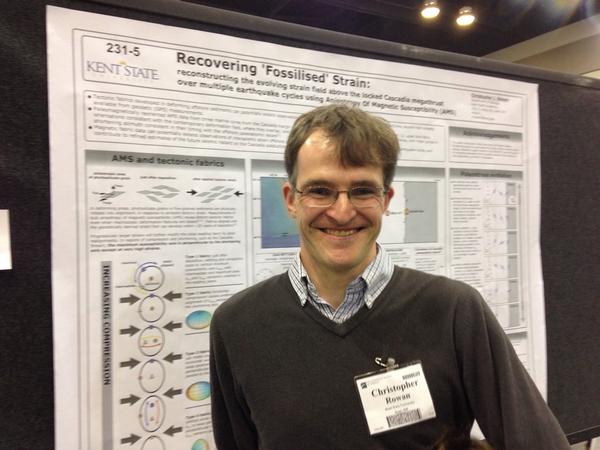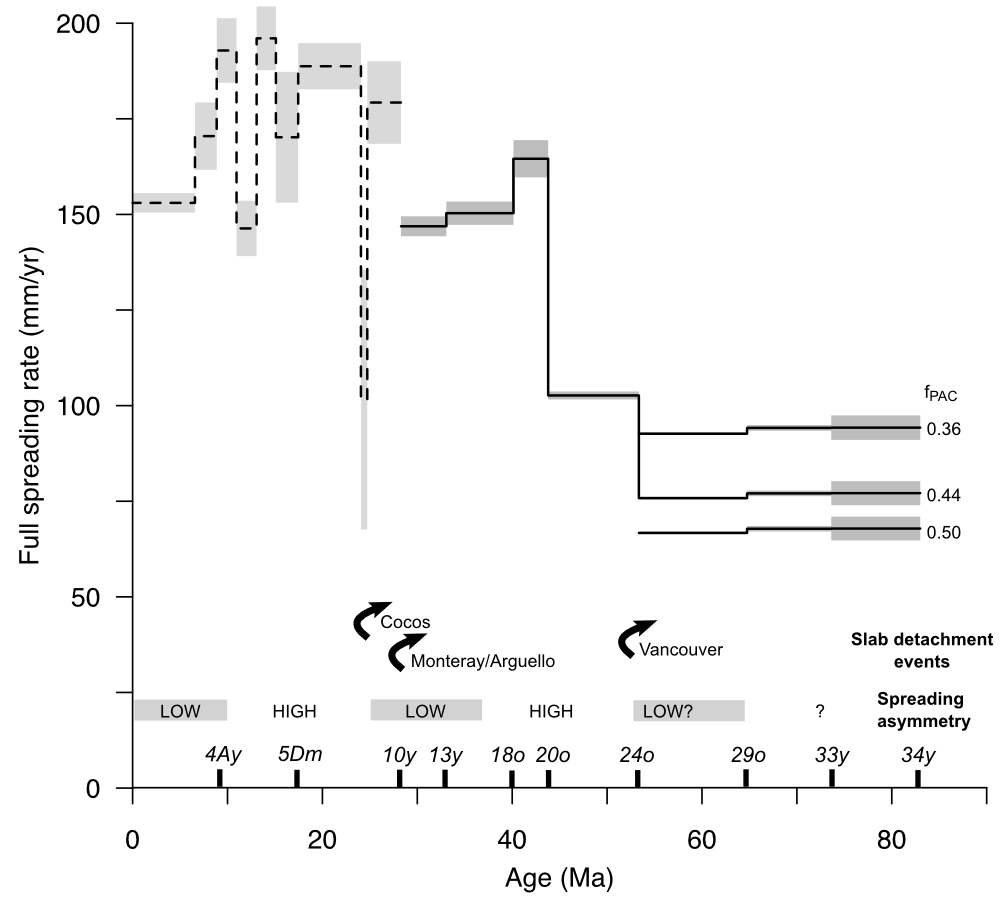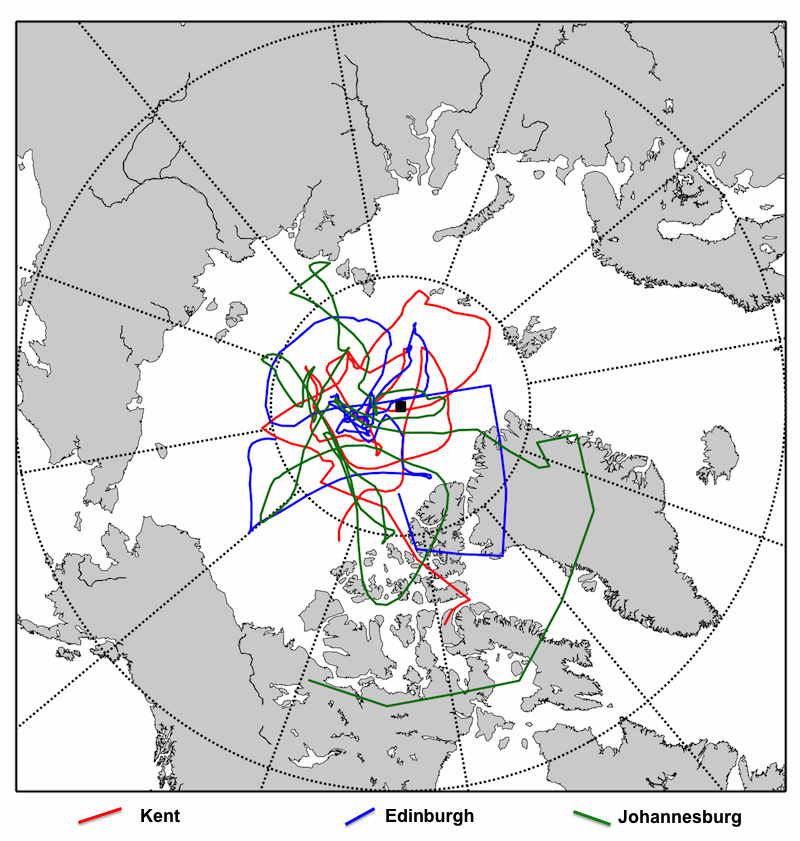The East Pacific Rise (EPR) is the fastest spreading part of the global ridge system, and has a couple of other unusual features. Spreading at the ridge is asymmetric, with about 55-60% of the oceanic crust produced over the past 50 million years found on the western side of the ridge (the Nazca plate). This asymmetric spreading has contributed to the other unusual feature: if you plot the position of the EPR in a mantle reference frame, the central part of the ridge has remained…Continue Reading “New Paper: Kinematics and dynamics of the East Pacific Rise linked to a stable, deep-mantle upwelling”
Last week, I was in Vancouver for the annual meeting of the Geological Society of America. There, I presented the first results of my research into the record of deformation on the Cascadia margin preserved in marine sediment cores. It has long been known that in deforming regions, fine-grained sedimentary rocks often preserve a record of the ambient strain field they formed in. Even very slight deformation causes phyllosilicate grains to rotate into a preferred alignment within the bedding plane, which registers as a slight…Continue Reading “New research on deformation in the Cascadia forearc presented at GSA in Vancouver”
In the Late Cretaceous, 83 million years ago, the Pacific ocean was dominated by the 10,000 km-long spreading ridge between the Pacific and Farallon plates. Since that time, the northern part of this ridge system has collided with the west coast of North America, leading to the progressive fragmentation of the Farallon plate, and its almost total subduction in the northern Pacific. In the southeast Pacific, the largest remanent is the ultrafast-spreading East Pacific Rise. Because of their length and generally fast spreading rates, the…Continue Reading “New Paper: Spreading behaviour of the Pacific-Farallon ridge system since 83 Ma”
A fundamental assumption of paleomagnetism is that, over geological timescales, the Earth’s magnetic field approximates a geocentric axial dipole – a purely dipolar field (like a bar magnet’s) that is centred on the Earth’s rotation axis. But we know that over human timescales, this is not true: the geomagnetic pole is found at high latitudes, but some distance from the geographic pole, and is known to wander about from year to year, decade to decade, and century to century. How to reconcile the GAD hypothesis…Continue Reading “Paleomagnetism Lab: Testing the GAD hypothesis”
My visit to San Francisco for the American Geophysical Union Fall Meeting was somewhat truncated this year, but I had a stimulating couple of days catching up and talking shop with many friend and colleagues from around the world. I also gave a presentation of new work that follows on from my post-doctoral research under the guidance of David Rowley at the University of Chicago, looking at the evolution of the East Pacific Rise, the world’s fastest spreading oceanic ridge system. Certain aspects of the…Continue Reading “AGU 2013 Presentation: more than slab pull driving the East Pacific Rise?”



